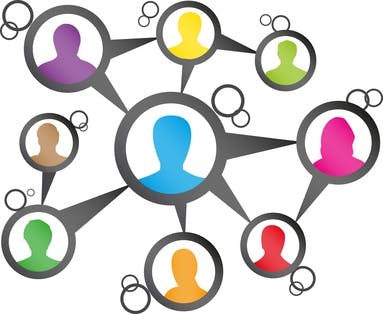The latest numbers are in and it’s not looking good: 63 percent of all workers are not engaged in their current job environments and are struggling to keep up with work.
At the base of these results comes a very interesting perspective on these high numbers — workers aren’t engaged because they don’t feel a real connection to their organizations.
Whether this is because of a bad boss or because of their workload stands to be argued, but one thing is clear: Poor engagement equals poor performance. There’s no other way around it.
So, what needs to be done in order to up the engagement and sustain a workforce? I have two words for you: social performance.
At its core, social performance is all about working together in order to achieve a collective goal. And it’s also about simplicity. As Leonardo DaVinci said, “Simplicity is the ultimate sophistication.”
Now, I understand that can be applied to teamwork in general, but it’s more than that. Let’s look at some ways organizations can benefit from a socially-driven workplace:
1. Helps employees understand the organization
Social performance can assist an employee to understand an organization’s mission. When everyone is working together on an objective, the purpose of the organization becomes embedded within each employee.
It helps employees truly understand the direction of their company, their teams, and adjacent teams that they support or that support their overall objectives. The impact is an organization in sync in real-time.
2. Sets the focus
Sometimes, we all need to regroup and truly align our goals with the overall focus. So, by setting a core focus to your goals, you’re connecting workers, objectives, and the outcome in one package. With an overarching focus in mind, your team begins to see their impact to the organization as they accomplish their goals not only in the correct way, but in a collective way.
3. Drives constant engagement
When an organization encourages social performance, they simultaneously encourage constant communication and collaboration on what matters most. It’s not just an article or a blog post; it’s what an individual, team, or organization is attempting to accomplish.
Publishing these social goals helps engage others in the organization. Most organizations are left to publishing goals quarterly, annually, in town hall updates, and even via email. As we know, these approaches won’t be as engaged since they’ll be out of the loop and, unfortunately, they’ll have to steer their own ship — sometimes in the wrong direction. This doesn’t benefit anyone, especially the organization.
4. Helps social recognition
In a study by Achievers, only 9 (nine) percent of employees strongly agreed that they were regularly recognized, while 57 percent of CEOs reported that employees were regularly recognized.
We all love to get that pat on the back at times, whether it’s from a co-worker or our manager. Socially recognizing the positive efforts of your workforce helps to build stronger relationships, as well as boosts company morale.
Social performance ties recognition to work and builds an employee’s professional profile and reputation in real-time. Plus, when employees are rewarded for what they do well, they are probably happier, which will typically be reflected in their performance.
5. It fosters a results-driven culture
We all want results. When you’ve got social performance in your back pocket, you effectively foster a results-driven culture because everyone is working together together to gain Fortune 500 accounts, bring in more customers, or cultivate a brand. Plus, the outcomes of every employee can affect the future of an organization.
When everyone has the same goal in mind, which is to bring in results, you can create an atmosphere of wanting to do better because there’s a reason to.
6. Forces performance reviews to be re-imagined
Let’s face the facts: four out of five employees hate performance reviews. Additionally, 45 percent of HR professionals believe they don’t accurately reflect an employee’s performance.
The concept behind the performance review may be a good, but the execution of them certainly doesn’t work for today’s workforce.
Instead of feedback given once or twice a year, social performance enables real-time feedback and an automated review which includes all social goals, recognition, contributions, results, and engagement with your co-workers. Whether you are a individual contributor, people manager, in leadership, or HR, this means everyone is aware of their impact and performance.
Real-time feedback is key since it allows the employee to change courses if they are doing the right thing at the wrong time, or if priorities change quickly. Generic, overall feedback once or twice a year doesn’t work anymore.
7. Assists with virtual teams
About one in five professionals around the globe work from home — and social performance is yet another way to manage this new sort of workforce. Because of the innate nature of a virtual team, feedback needs to happen more often, meetings should occur in closer proximity, and communication is the cornerstone of getting things done the right way.
Social performance encourages all of this since teams act as a collective whole. Virtual or not, this enables the work to be done in the right way because everyone is aware of what they have to do, when they have to do it, and how to do it well. In turn, the virtual office stops being something that people put a huge emphasis on and starts being something that produces long-lasting, positive success, the latter of which is the goal of most organizations.
What do you think? What are some other ways organizations can benefit from social performance?
